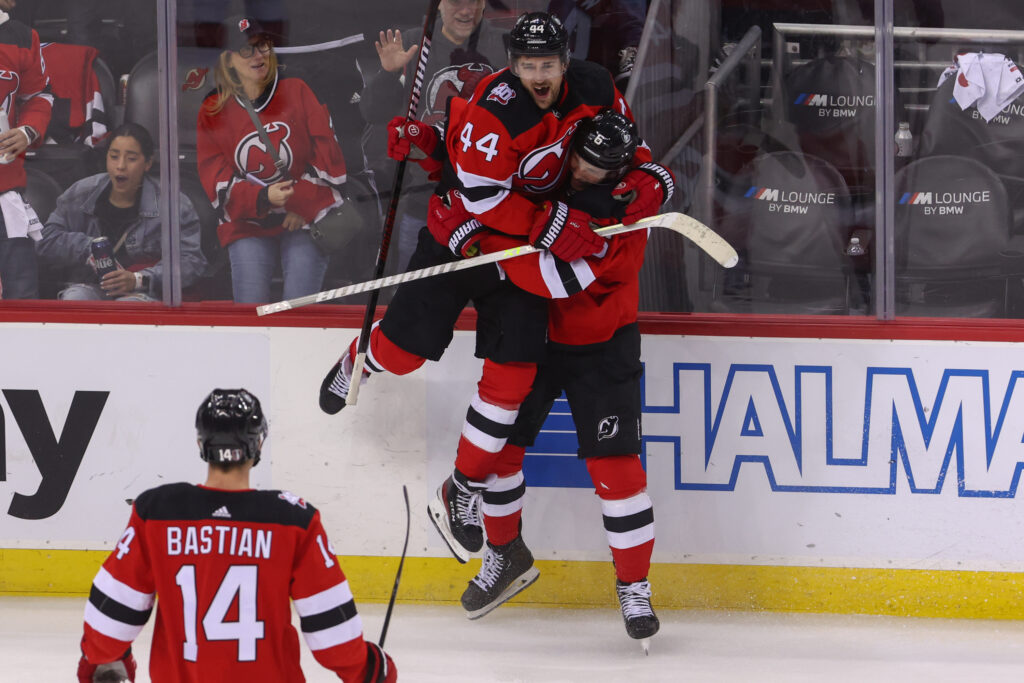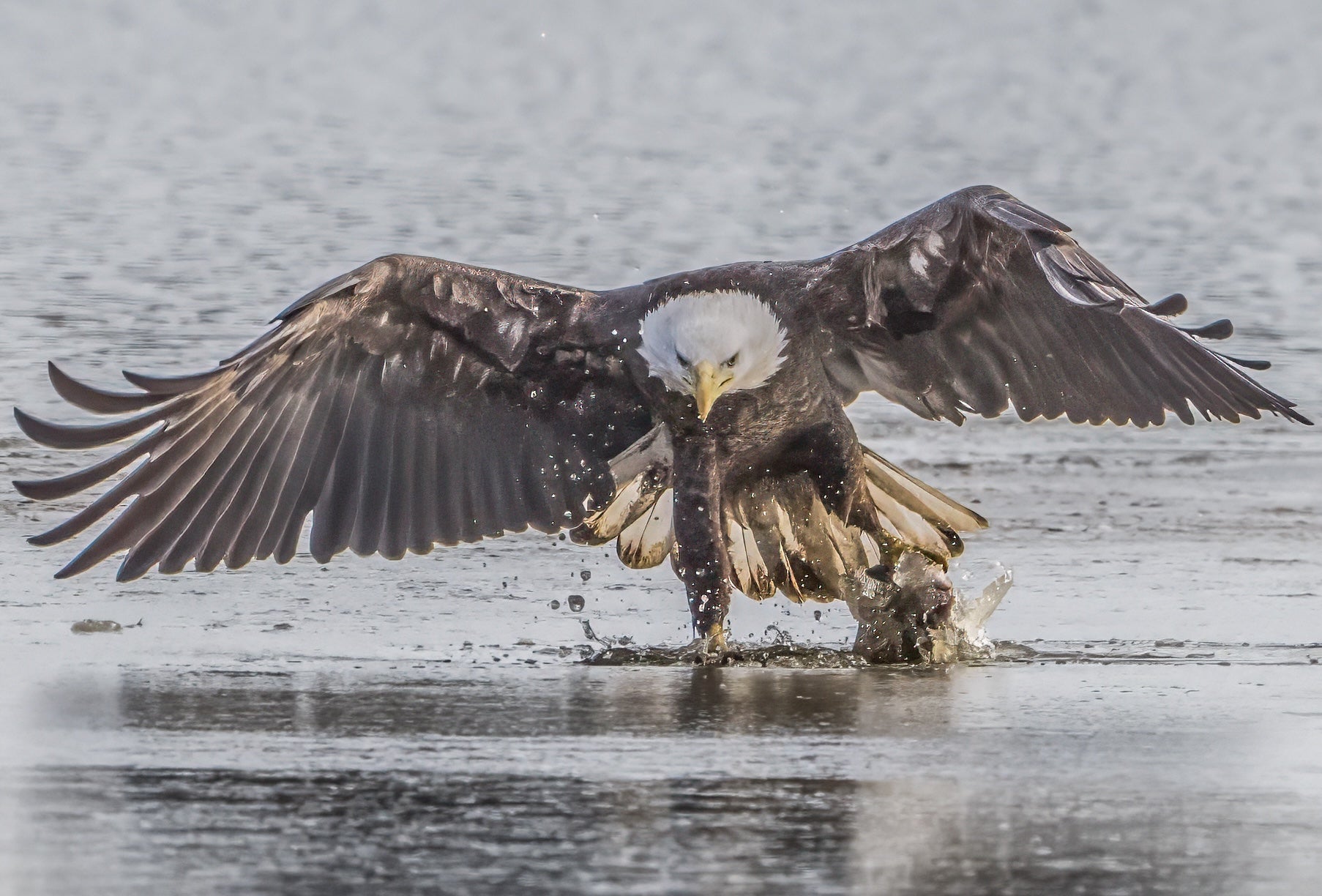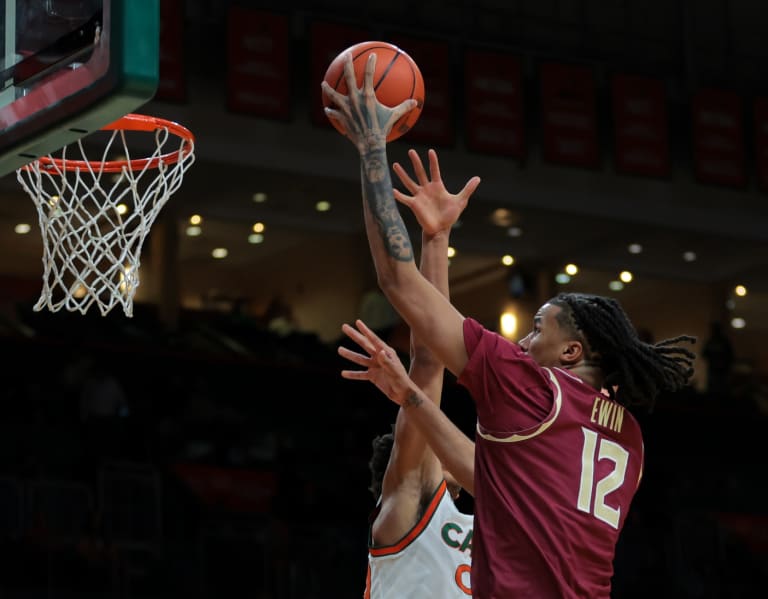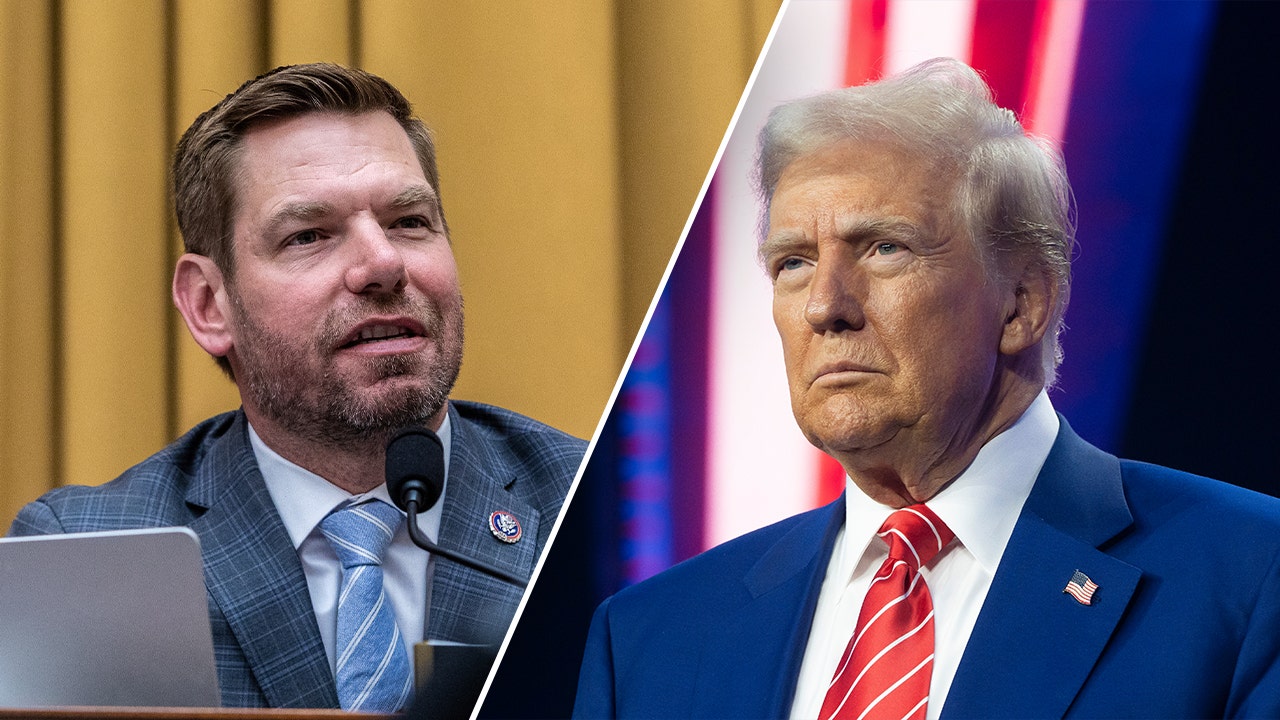New Jersey
Summer Synopsis: New Jersey Devils

Last season was something of a dream for the New Jersey Devils and their fans. Almost immediately after the Devils began play, chants calling for the firing of head coach Lindy Ruff rained down at the Prudential Center. The Devils began the season 0-2, and after years of rebuilding many fans felt a new coach in charge would be necessary to finally lift the club out of the doldrums of their rebuild.
By the end of the regular season, though, such a change proved unneeded. Ruff guided the Devils to a 52-22-8 record, registering the third-most standings points in the entire NHL. He oversaw breakout performances for numerous young Devils, including face of the franchise Jack Hughes (99 points) captain Nico Hischier (80 points, runner-up for the Selke Trophy), and sophomore Dawson Mercer (27 goals, 56 points).
The Devils now look like an up-and-coming juggernaut franchise, a club loaded with high-end youngsters and valuable veteran talent. Despite it being the first playoff run for many of the Devils’ players, the team even showcased some playoff poise, coming back from a 2-0 series deficit to eliminate their arch-rival New York Rangers in a Game Seven. The time is now for New Jersey to join the ranks of the NHL’s elite, and their offseason reflected such lofty ambitions.
Draft
2-58: F Lenni Hämeenaho, Pori (Liiga)
4-122: F Cam Squires, Cape Breton (QMJHL)
5-154: D Chase Cheslock, Omaha (USHL)
6-164: F Cole Brown, Hamilton (OHL)
6-186: D Daniil Karpovich, D, Yekaterinburg (MHL)
As a result of the Devils’ aggressiveness in acquiring NHL-ready talent this past season (namely with their addition of Timo Meier from the San Jose Sharks) the team was left without a first-round pick for the first time since 2013. That’s not exactly an issue for New Jersey, though, as the team made five first-round selections between the 2020 and 2021 drafts and made the second overall pick at the 2022 draft. The Devils were due for a leaner draft class, though that’s not to say they left this year’s exercise in Nashville empty-handed
Hämeenaho was a shrewd pick late in the second round. For the Devils to be able to compete on a consistent basis with their core locked into expensive deals, they’ll need their front office and development staff to deliver a consistent pipeline of NHL talent available on entry-level contracts. Hämeenaho isn’t regarded as a high-upside dice roll, instead widely considered a safe bet to have a long professional career.
The versatile forward scored an impressive 21 points in full-time duty playing for Ässät in the Finnish Liiga, holding his own against pro players in one of the best leagues outside the NHL. After another season spent overseas in Pori, Hämeenaho could become one of the players outside the 2023 first round who most quickly earns his first NHL game.
In the middle rounds, the Devils took a point-per-game major junior forward in Squires and a toolsy right-shot defensive project in Cheslock, both reasonable picks in those middle rounds. In the sixth round, the Devils reached back into the CHL to grab Brown, who scored 42 points for the Hamilton Bulldogs last season, as well as Karpovich, a rangy Russian blueliner.
Trade Acquisitions
F Tyler Toffoli (from Calgary)
D Colin Miller (from Dallas)
F Shane Bowers (from Boston)
The big-name addition here is that of Toffoli, acquired from the Calgary Flames for the reasonable price of a third-round pick and Yegor Sharangovich. Toffoli, 31, has one year left on his deal at an affordable $4.25MM cap hit and should be an instant impact player for the Devils.
A 2014 Stanley Cup champion, Toffoli not only offers strong offensive production to the Devils (34 goals, 73 points last season) he also has a wealth of playoff experience to draw on to help guide this young Devils team.
Although Toffoli’s lackluster skating may make it difficult for him to keep up in the Devils’ high-flying offensive attack, he remains one of the league’s more lethal finishers and smarter offensive creators. He’s likely to land on a scoring line centered by either Hughes or Hischier, and if that ends up happening he stands a strong chance to repeat last season’s career-best performance.
Miller is a lower-profile addition but a solid one nonetheless by Devils GM Tom Fitzgerald. Miller was the Dallas Stars’ number-five defenseman last season, averaging 16:46 TOI per game. He didn’t factor into the mix on special teams as he’s done at times earlier in his career, and this average ice time was Miller’s lowest since his first two seasons in the NHL. That being said, even though Miller isn’t the same defenseman anymore that scored 41 points as a member of the Vegas Golden Knights, he can still capably endure regular NHL minutes and he’ll provide depth to the right side of the Devils’ blueline.
While the Devils are undoubtedly hoping that 2022 second overall pick Šimon Nemec will make a push for a spot in Ruff’s opening-night lineup, their addition of Miller means Nemec will have to outplay an experienced NHL blueliner in order to win a job.
Key UFA Signings
F Tomáš Nosek (one year, $1MM)
D Cal Foote (one year, $800k)*
F Chris Tierney (one year, $775k)*
F Justin Dowling (two years, $1.55MM)*
G Erik Källgren (one year, $775k)*
F Kyle Criscuolo (one year, $775k)*
*-denotes two-way contract
The Devils spent most of their available cap space this summer on re-signing their star restricted free agents as well as adding more expensive players via trade. This thinned out Fitzgerald’s wallet when it came time to shop for UFAs, and the result is a collection of Devils signings meant to bolster the organization’s depth rather than radically alter their competitive chances.
As the headline signing of this batch of UFA additions, Nosek might not drive up ticket sales, but he will help contribute to winning hockey. He centered the fourth line of a record-setting Boston Bruins team, and plays a reliable, consistent two-way game. He was a regular face on the NHL’s best short-handed unit for the Bruins, and scored a career-high 18 points in 66 games.
Perhaps most impressively, the team employing Nosek as a full-time player has never missed the playoffs so far in his professional career, even dating back to Nosek’s days in the Czech league.
He has 52 NHL postseason contests on his resume, including a run to the Stanley Cup Final in 2018 and a stellar Calder Cup championship run in 2017.
Despite his relatively modest box score number, Nosek is a highly respectable player and someone who can easily provide surplus value on a $1MM one-year investment. With Nosek added to a center corps that already boasts Hughes, Hischier, Erik Haula, and Michael McLeod, one could argue that the Devils have the most talented and deepest set of centers in the entire NHL.
Beyond Nosek, the rest of the signings are more meant to improve the Devils’ overall depth than directly impact the NHL roster. Foote is a former top prospect who will compete with Kevin Bahl for the third-pairing left-shot defensive job, Tierney is an experienced pivot who will look to claim a regular bottom-six role at training camp, and Källgren is a well-traveled netminder who is likely to split time with Nico Daws in the AHL.
Key RFA Re-Signings
F Timo Meier (eight years, $70.4MM)
F Jesper Bratt (eight years, $63MM)
D Kevin Bahl (two years, $4.1MM)
The extensions of Meier and Bratt are the two most significant moves the Devils made this past summer. Meier, 26, came at an expensive price tag ($8.8MM AAV) but is one of the more coveted talents in the NHL. The Swiss international is a skilled power forward who got off to a relatively slow start in New Jersey but nonetheless finished with 66 points last season.
He’s scored 75 goals across the past two campaigns, and even though his playoff production was poor (four points in 12 games) he showed he could still make an impact for New Jersey through his physicality and aggressiveness. He’ll be an integral part of the Devils’ offensive attack for years to come.
As for Bratt, he’s coming across a second consecutive 73-point campaign. His playoff production (six points in 12 games) leaves some worry that his slender frame and more perimeter-focused game might not be as effective in the playoffs, though his star status in the regular season is undeniable. Bratt is a genuine offensive creator and at a sub-$8MM cap hit he has the potential to provide the Devils with serious surplus value for their eight-year investment.
Bahl, 23, signed a notably smaller contract than the other two, reflective of his status as more of a complementary NHL player rather than a play-driving star. He’s a big, physical defenseman who saw a more regular NHL role with the Devils as the season wore on. He’s arguably the Devils’ most fearsome defenseman when it comes to physicality, and this contract should allow him to continue establishing himself as an NHL regular in New Jersey.
Key Departures
F Yegor Sharangovich (traded to Calgary)
F Tomáš Tatar (remains a free agent)
F Miles Wood (six years, $15MM, Colorado)
D Ryan Graves (six years, $27MM, Pittsburgh)
D Damon Severson (sign-and-trade to Columbus)
D Reilly Walsh (traded to Boston)
G Mackenzie Blackwood (traded to San Jose)
The Devils lost quite a bit of veteran talent this offseason, starting with a pair of minutes-eating veteran blueliners in Severson and Graves. While the Devils are hopeful that the integration of star young defensemen such as Luke Hughes and Nemec will make up for these subtractions, losing Graves’ steady top-four minutes and Severson’s offensive production will likely hurt in the immediate term.
Up front, the biggest Devils’ loss is of Tatar, who the team replaced with the addition of Toffoli. Tatar was a capable regular-season scorer in New Jersey, and helped the team achieve the goal of exiting their rebuilding phase by reaching the playoffs. His contributions to that achievement should be lauded.
But Tatar’s longstanding issues in the playoffs (he has just 13 points in 52 career postseason contests) reintroduced themselves in the Devils’ postseason trip, likely paving the way for his exit from New Jersey.
Now that the Devils are primarily fixated on playoff success, Tatar’s unique case as a regular season contributor but playoff no-show was something team management likely could no longer accept.
So they went out and acquired a proven Stanley Cup champion and playoff contributor, leaving Tatar to potentially sign with a team in a similar position to where New Jersey was two years ago, willing to accept production exclusively in the regular season in an effort to end an extended playoff drought.
In Wood, the Devils have lost an energetic bottom-six forward and a valuable veteran leader. He’s someone the Devils would have likely preferred to keep, but the tighter cap constraints the team has been working with made it impossible for them to compete with the lucrative offer he received from the Avalanche.
In net, the Devils lost Blackwood via a trade with the Sharks, giving the goalie a fresh start in San Jose. The Devils may have still believed in the upside Blackwood at times flashed in New Jersey, but with the emergence of Vitek Vanecek and Akira Schmid it became clear that if Blackwood was going to break out at the NHL level, it likely wouldn’t be with the Devils.
Salary Cap Outlook
There’s no mistaking it, the days of the Devils being able to freely target players for future contending teams are over. The Devils have now made significant investments in a core of young players, and any surplus cap space the team still has will likely be eaten up by future extensions for Mercer, Hughes, and Nemec.
New Jersey’s cap situation does have its benefits, though, as Hughes and Hischier are likely to provide an immense amount of surplus value on their current contracts, especially as the cap goes up. Hughes’ $8MM AAV cap hit was recently matched by the Ottawa Senators’ signing of Jake Sanderson, a promising player but one with just 77 games of NHL experience. Had the Devils waited to extend Hughes, the team wouldn’t be able to lock him into a long-term deal for cheaper than $10MM AAV, at minimum.
When one considers contracts and play at both ends of the ice, Hischier’s $7.25MM cap hit through 2026-27 makes him one of the most valuable assets in hockey. He could end up a multi-time Selke Trophy winner now that Patrice Bergeron is retired, and has scored near a point-per-game rate over the past two seasons. So while the Devils are facing some tight years ahead regarding their salary cap situation, these two franchise pillars are locked into exceptionally team-friendly contracts, contracts that will only grow in surplus value as the cap rises.
Key Questions
Will the Devils get Stanley Cup-caliber goaltending?: Looking up and down their roster, one could definitely make the argument that the Devils have the strongest set of 18 starting skaters in the entire NHL. The flip side of that, though, is that one could also argue that the Devils have the weakest goaltending of any of the Eastern Conference’s playoff contenders.
A year ago, the Devils believed they were just league-average goaltending away from making the postseason, despite missing by a fair margin in 2021-22. They were right, as Vanecek’s mostly average play (great at times, poor at others) powered them to an elite season. But in the playoffs, Vanecek fell apart, and the team’s season was saved by Schmid, a rookie. That tandem is likely going to be good enough for the Devils to have another elite season. But will it be enough for the team to make a run deep into the spring and early summer?
Will the Devils’ veteran departures cost the team, or will young players step up and fill those vacated roles?: As mentioned, the Devils lost quite a bit of veteran talent this summer. In order to keep the franchise from taking a step backward in the standings, young players will need to step up and prove they can handle less sheltered roles at the NHL level. Hughes (Luke), Bahl, and Nemec will need to help compensate for the losses of Graves and Severson.
Fitzgerald recently called Alexander Holtz a future “pillar” of the franchise, the departures of Tatar and Wood give him the opportunity to prove it. They were and are each highly regarded prospects, but will they be able to translate their success at other levels of hockey to the world’s best league?
Photos courtesy of USA Today Sports Images.

New Jersey
N.J. governor says violent crime is down across state

Watch CBS News
Be the first to know
Get browser notifications for breaking news, live events, and exclusive reporting.
New Jersey
New Jersey removes bald eagles from endangered species list as populations soar

This story is part of the WHYY News Climate Desk, bringing you news and solutions for our changing region.
From the Poconos to the Jersey Shore to the mouth of the Delaware Bay, what do you want to know about climate change? What would you like us to cover? Get in touch.
In the early 1980s, New Jersey was on the brink of losing its last remaining bald eagles. Only one nesting pair existed in the state, and their eggs weren’t hatching because of the lingering effects of the insecticide DDT, which was banned in 1972.
Following decades of restoration work, bald eagles now nest in every New Jersey county. This week, the state removed the bald eagle off its endangered species list — more than 17 years after the majestic bird was federally delisted.
“I’ve been around a long time and have not seen very many species delisted. So, it really is a very special thing,” said Kathy Clark, chief of the endangered and nongame species program at New Jersey Fish and Wildlife.
In 2024, New Jersey surveyed a record 293 nesting pairs of bald eagles, of which 264 laid eggs. Their highest numbers are found along the Delaware Bay, where protected marshlands and coastal creeks provide ideal habitats. The state was able to delist the species because their reproductive rate over multiple years reached sustainable levels.
The success story follows years of artificially incubating eggs, introducing eagle chicks from Canada, monitoring nests and educating the public.
“What this really shows is that big picture conservation is possible. It starts with an inspirational spark that causes a wide swath of people to care deeply, and then the work requires learning, effort and perseverance over the long term,” said Alex Ireland, president and CEO of the environmental group New Jersey Audubon. “It’s very important that we think about this proactively as we go forward. It is much better to conserve species before listing is ever required.”
Following the nationwide recovery of the bald eagle, starting in the Chesapeake Bay, the U.S. Fish and Wildlife Service delisted the predatory bird in 2007.
The national ban on DDT, as well as policies aiming to protect birds of prey, played a role in the eagles’ recovery, said Jason Weckstein, an ornithologist at the Academy of Natural Sciences of Drexel University.
“Eagles are an amazing success story. They went from being pretty rare — it was not something that you saw in the suburbs — and now, here in my neighborhood in Wynnewood, I see bald eagles all the time,” he said. “Look up, because there’s a good chance you’ll be able to see an eagle.”
However, several states did not immediately remove bald eagles from their own endangered species lists. For example, Pennsylvania made the move in 2014.
New Jersey
Burlington County, New Jersey, congregation raising historic church to avoid flooding

Doris Priest, a lifelong Burlington County resident, has watched countless landmarks in her community fade into the past.
But there’s one place she prays will endure: her beloved church.
“It’s a small church. It’s just quaint,” said Priest, who is the vice president of the Lumberton Historical Society.
That quaint church is Trinity Episcopal in Vincentown, New Jersey.
It was built in 1871 near the banks of the Rancocas Creek, where it’s stood firm ever since.
However, the growing threats of climate change could soon uproot it.
Priest said each year brings stronger storms and worsening flooding.
“I think it was 2003 we had 5 feet of water in the church,” Priest said. “We get very scared. It was devastating to walk in and everything was gone.”
According to climate risk data from Firststreet.org, more than 37,000 properties in Burlington County are at risk of major flooding over the next 30 years.
That’s why Trinity Episcopal Church is spending hundreds of thousands of dollars to replace and raise the 154-year-old foundation. The plan is to elevate it 4 feet in hopes of preventing future damage.
“In this country, we lose a lot of our history and that upsets me,” Priest said. “We’re trying to save history.”
The church will remain closed during construction, which is expected to be completed by Easter Sunday.
-

 Business1 week ago
Business1 week agoThese are the top 7 issues facing the struggling restaurant industry in 2025
-

 Culture1 week ago
Culture1 week agoThe 25 worst losses in college football history, including Baylor’s 2024 entry at Colorado
-

 Sports1 week ago
Sports1 week agoThe top out-of-contract players available as free transfers: Kimmich, De Bruyne, Van Dijk…
-

 Politics6 days ago
Politics6 days agoNew Orleans attacker had 'remote detonator' for explosives in French Quarter, Biden says
-

 Politics6 days ago
Politics6 days agoCarter's judicial picks reshaped the federal bench across the country
-

 Politics4 days ago
Politics4 days agoWho Are the Recipients of the Presidential Medal of Freedom?
-

 Health3 days ago
Health3 days agoOzempic ‘microdosing’ is the new weight-loss trend: Should you try it?
-

 World1 week ago
World1 week agoIvory Coast says French troops to leave country after decades




















